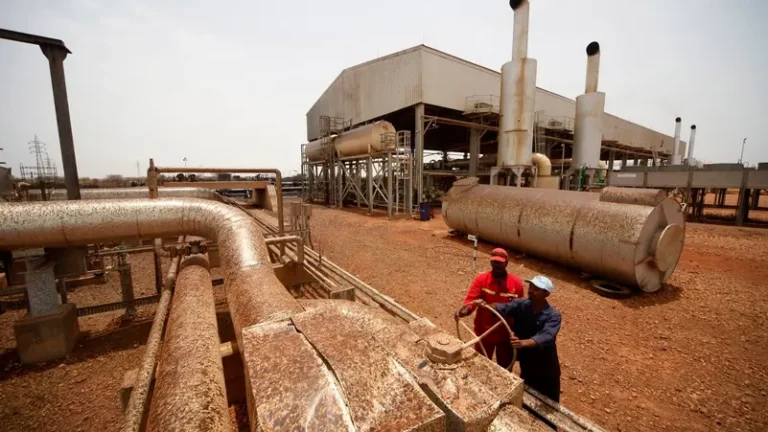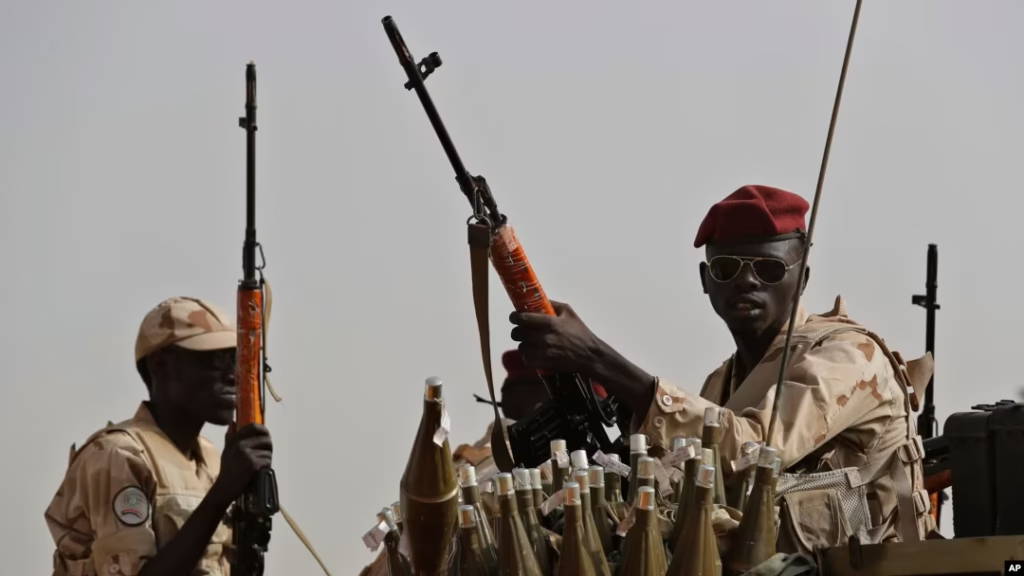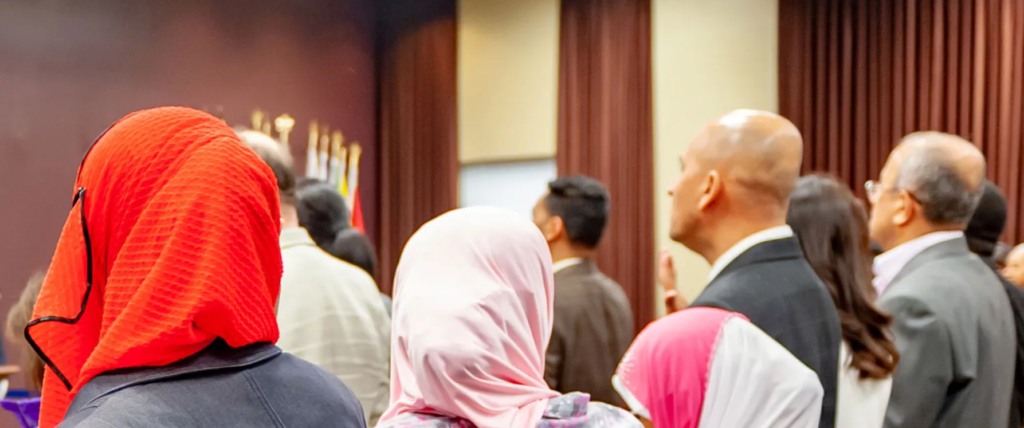
On May 8th 2024 Sudanese Armed Forces (SAF) suffered one of its bloodiest days in history with nearly 1,000 casualties at the hands of Sudan’s Rapid Support Forces.
RSF fighters, dressed in tan khaki uniforms and wearing Tuareg-like desert scarves, use hit-and-run tactics aboard various slew of heavily modified pickup trucks, which look like they came from the Max Max Fury Road shoot, to inflict maximum damage on opposition fighters.
Sudan since its independence in 1956 has suffered 4 civil wars, countless cases of ethnic cleansing, and 19 attempted coups of which 7 were successful.
How did we get here?
The latest Sudanese civil war began on April 15 2023 when the army and RSF forces opened fire on each other in Khartoum.
RSF fighters took control of Khartoum International Airport and stormed President al-Burhan’s presidential palace in an attempt to neutralize him.
Although al-Burhan managed to escape, over 30 of his bodyguards were reportedly killed in the clashes.
RSF also managed to take control of key cities such as Nyala, Port Sudan, Rabak and al-Qadarif but was pushed out the next day by the army.
For the next few months, heavy fighting took place in Khartoum and Omdurman between the RSF and the army.
On June 11 2023 Sudanese Armed Forces launched a counteroffensive in Khartoum after receiving reinforcements.
The objective of the counteroffensive was to unblock several key positions like police headquarters, the general intelligence service base, and the armoured corp base.
However, on June 25th after days of heavy fighting, RSF captured police headquarters in Khartoum.
The loss of the symbolic police headquarters was a turning point in public support for al-Burhan.
Al-Burhan’s months-long blunders resulted in a massive loss of public backing and a “meme frenzy” with Sudanese poking fun at his military failures all over social media.
And on July 7th 2023, RSF fighters were seen walking inside the general intelligence services compound.
One after another key government positions in Khartoum fell to the RSF.
RSF tactical units, how do they operate?
The main tactical units of the RSF are relatively small, with each division numbering between 15 officers, 550 soldiers and 100 pickup trucks.
RSF suffers from a lack of armored vehicles, and air defense capabilities. But their strength lies in not armor or air power but in mobility and their tactic of back and forth during battles.
Overall, the mobility and tactical skills of the RSF allow them to control vast areas of the country without air power or armor support.
However, the RSF faces challenges against well-fortified strongholds where the Sudanese air force can conduct strikes. Additionally, the lack of heavy armor in the RSF allows the army to resupply besieged garrisons through airdrops.
Fighting intensifies in the capital region
On July 15th 2023, the army launched an offensive aimed at breaking the siege of the signal corp base, the first attack was launched across Al Halfaya Bridge but was a diversion as the main army column rushed to police headquarters from the eastern side.
Where they were ambushed by the RSF.
Videos circulating online showed over 20 destroyed vehicles, and scores dead, and RSF managed to capture over 90 vehicles and the commander of the task force responsible for securing signal corp base.
The battle would come to be known as al-Burhan’s blunder.
By mid-August 2023 there was heavy fighting over the 4 bridges linking Khartoum to Omdurman.
RSF was able to overrun the army forces at Shambat Bridge, finally establishing a solid defensive position in Omdurman.
By the 28th of August RSF was able to penetrate the perimeter of the armored corp base.
On the 4th of September, the Sudanese army lost control of the eastern side of the base, only controlling a small portion of the base and was completely surrounded.
By mid-September, RSF controlled most of Khartoum.
Sudanese army garrisons of signal corp, the general command center plus the armored and ammunition bases were encircled and surrounded by the RSF.
Other RSF detachments made significant progress in the residential areas of Omdurman.
This resulted in the encirclement of the army engineer corp, and bloody urban battles.
Instead of getting bogged down in Omdurman, RSF turned its attention to North Kordofan province to consolidate their supply lines between Nyala and Khartoum.
In September RSF commander Mohammed Hamdan Dagalo’s brother Abdelrahim Dagalo was put in command of the siege of Nyala.
By 23 November RSF had overrun several enemy defensive positions in Nyala, by the 26th RSF had full control of the city.
Within 2 weeks, RSF had turned its attention to Geneina, garriosoned by the army’s 15th infantiry division.
On the second of November, Dagalo gave the garrison a 6 hour ultimatum to surrender, 2 days later 15th infantry division abandoned its combat positions in Geneina, left their equipment, and took off towards Chad.
By the end of November 2023 el-Fasher was the last of 5 state capitals in Darfur under Sudanese army control.
RSF had also dislodged the 22nd army division from Babanusa, resulting in the Sudanese army abandoning 6 additional bases in the region.
This campaign allowed RSF to capture essential oil fields in Darfur and Kordofan provinces.
Another disaster struck the Sudanese army on November 5 in Khartoum when RSF took full control of the armored corp base.
However, by the end of December 2023, there was a stalemate in Khartoum.
To break the deadlock, RSF commander ordered his troops to travel up White Nile towards town of Wad Madani, opening another front and kicking off the Gezira state campaign.
The army strikes back
With the disastrous situation unfolding across Sudan, al-Burhan and his army responded in early February by launching an operation to break the siege on engineer corp in south Omdurman.
On February 4th, army forces in north Omdurman and besieged forces in the south attacked RSF positions with the aim of converging in central Omdurman.
2 weeks later mission was accomplished and after many months of fighting Sudanese army had achieved its first major victory in the civil war by breaking the 10 month old siege of engineer corps.
One month later army captured the national TV and radios station.
Heavy fighting on the southeastern front
Fighting had exploded in Gezira province by March.
On April 8th the Sudanese Armed Forces and ethnic militias converged on Wad Madani from east and west.
Army was able to greatly expand its area of control on the west side of White Nile by mid-April.
After a year of Mad Max style war in Sudan, neither side could get the upper hand.
On the southern front, Sudanese army was desperate to break the siege of al Obeid.
To do this they had to take control of the road between Kosti and al Obeid.
Bloodiest day in recent Sudanese military history
And on 8th of May Sudanese army units from al-Obeid captured the central police reseve station and pushed 10 kilometres towards Kordofan from the east.
Sudanese army was so sure of victory it brought dozens of trucks and supplies to permenantly occupy the new positions.
However RSF counterattacked the forward elements of fifth infantry division.
It was a complete bloodbath, all the supplies were abandoned and hordes of fleeing Sudanese soldiers were gunned down by the RSF.
The army column that left Kosti did not fare much better.
The armored column was completely annihilated as it was flanked on all sides by modified Toyotas and pick up trucks reminiscent of Fury Road.
All in all, May 8th was a bloody day for the Sudanese Armed Forces with most estimates putting the number of KIA’s at almost 1,000.
RSF launched a counteroffensive after the rout to capture Kosti, although the army was able to recapture Babusa its 22nd infantry division is once again encircled.
Currently most heavy fighting is taking place in and around el-Fasher, with RSF fighters storming the northeast part of town.
Situation on the ground for the Sudanese military is dire as they are very close to being evicted from southwest of the country.
If RSF is able to push out military out of this region it will have countless oil fields and gold mines under its control.
And once that happens, this will allow RSF to concentrate as many fighters as possible for the final push to take the capital region of Khartoum and Omdurman, and bring an end to the latest Sudanese civil war.




